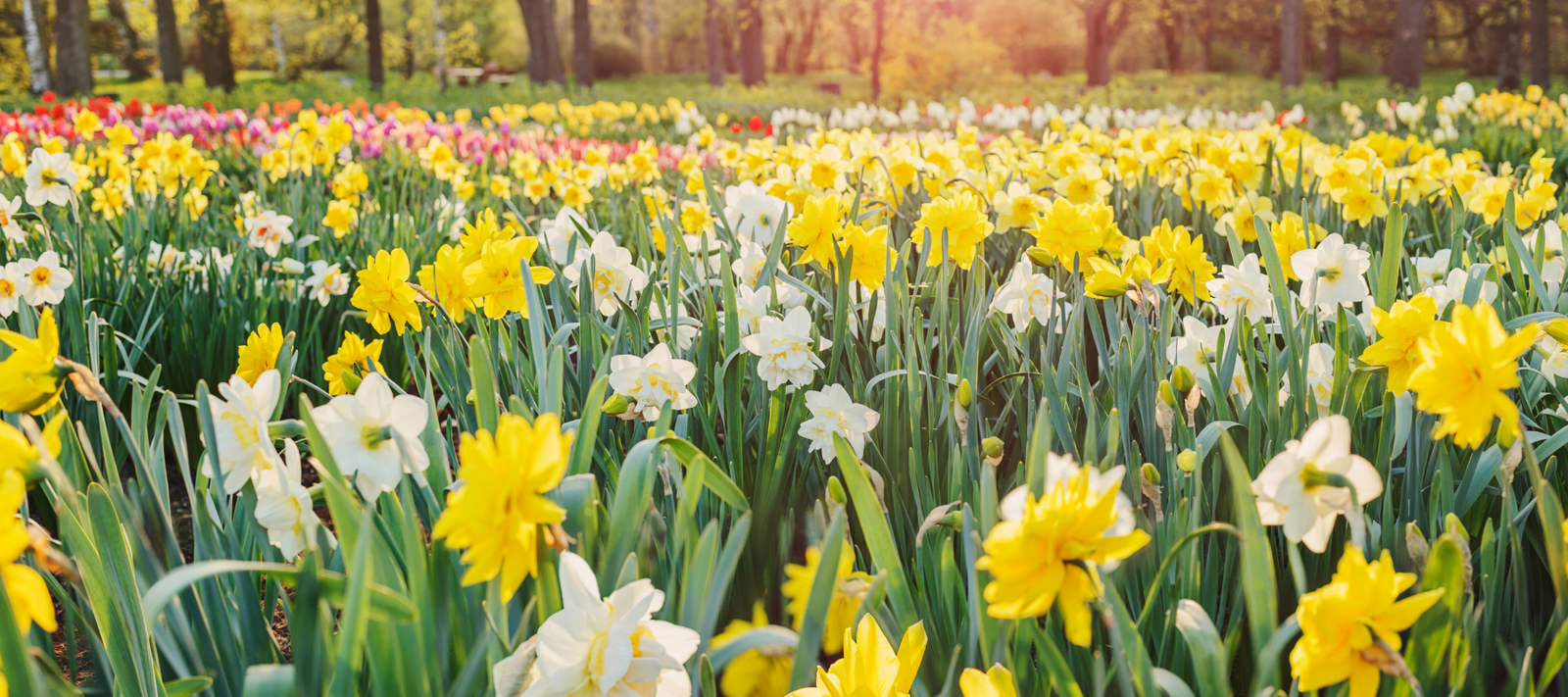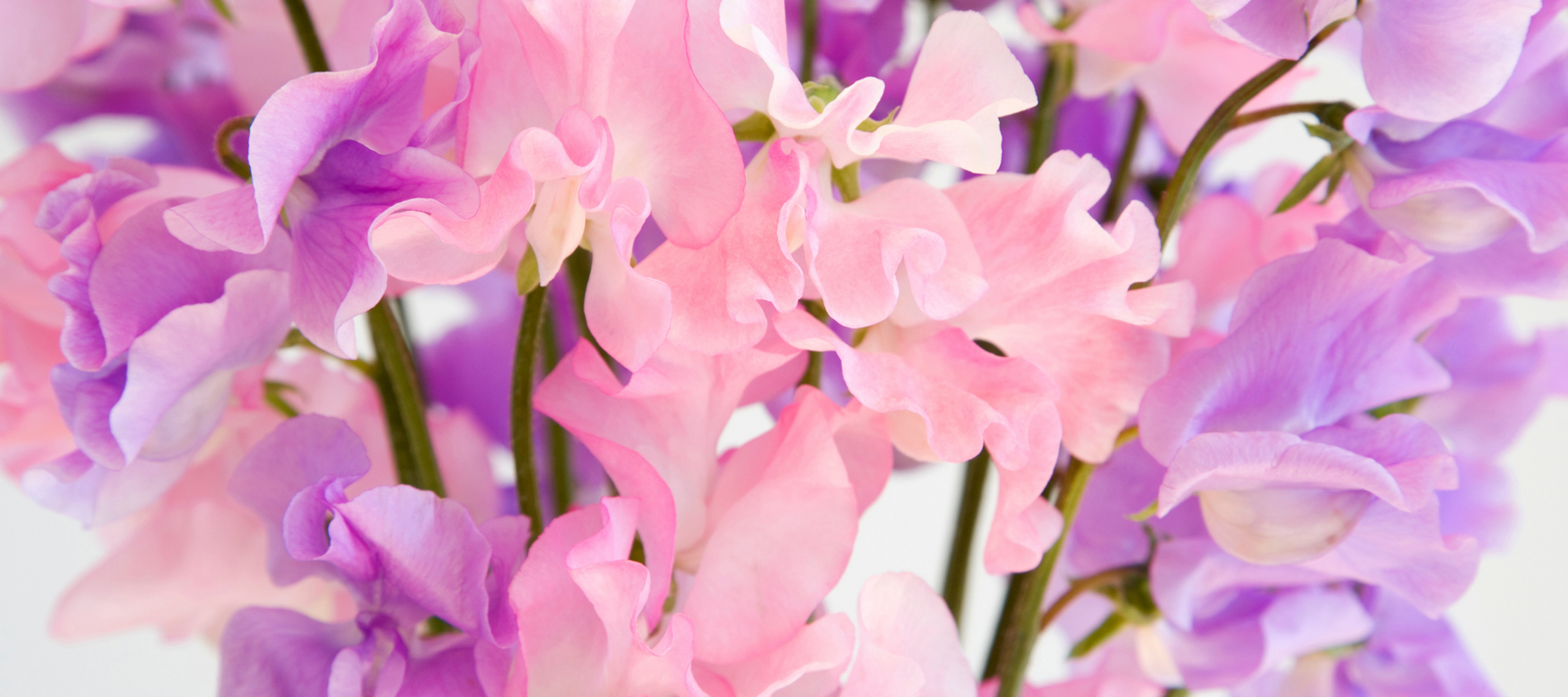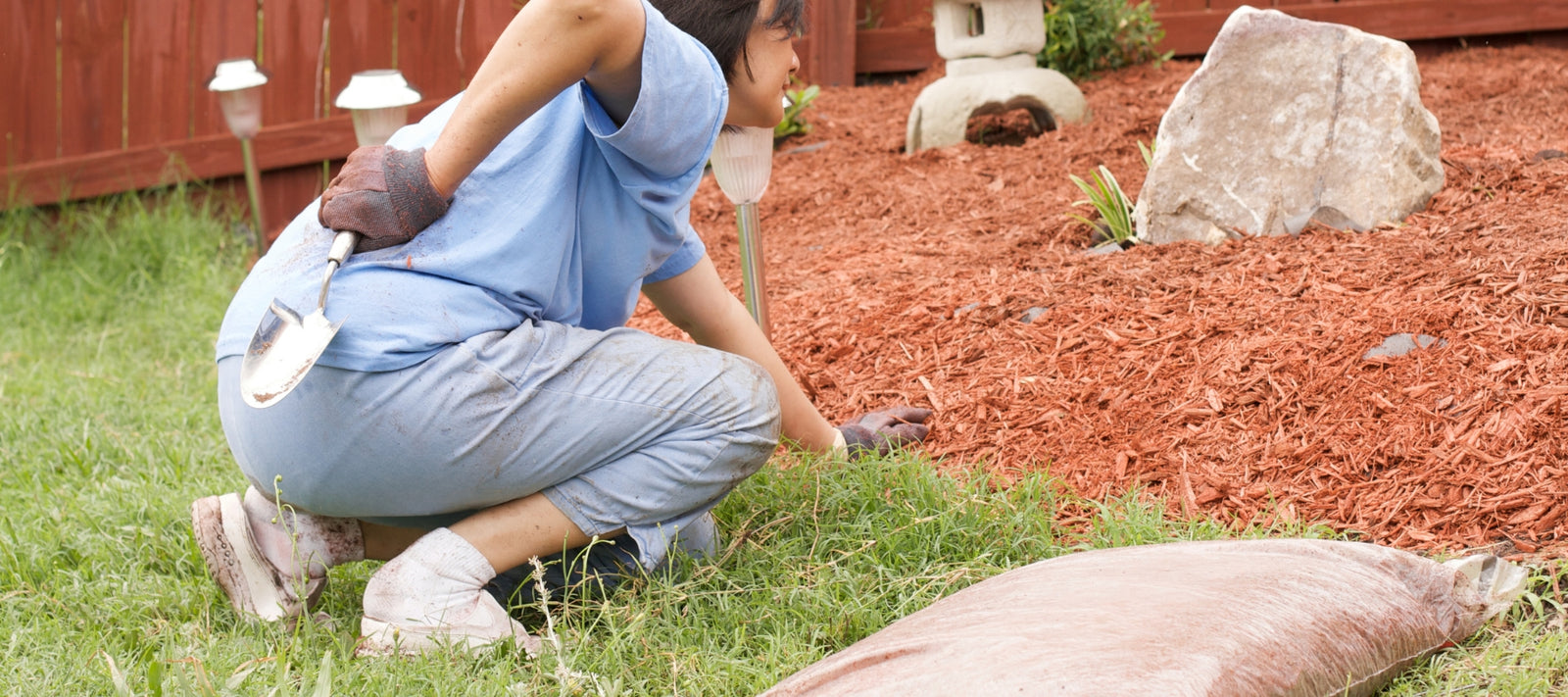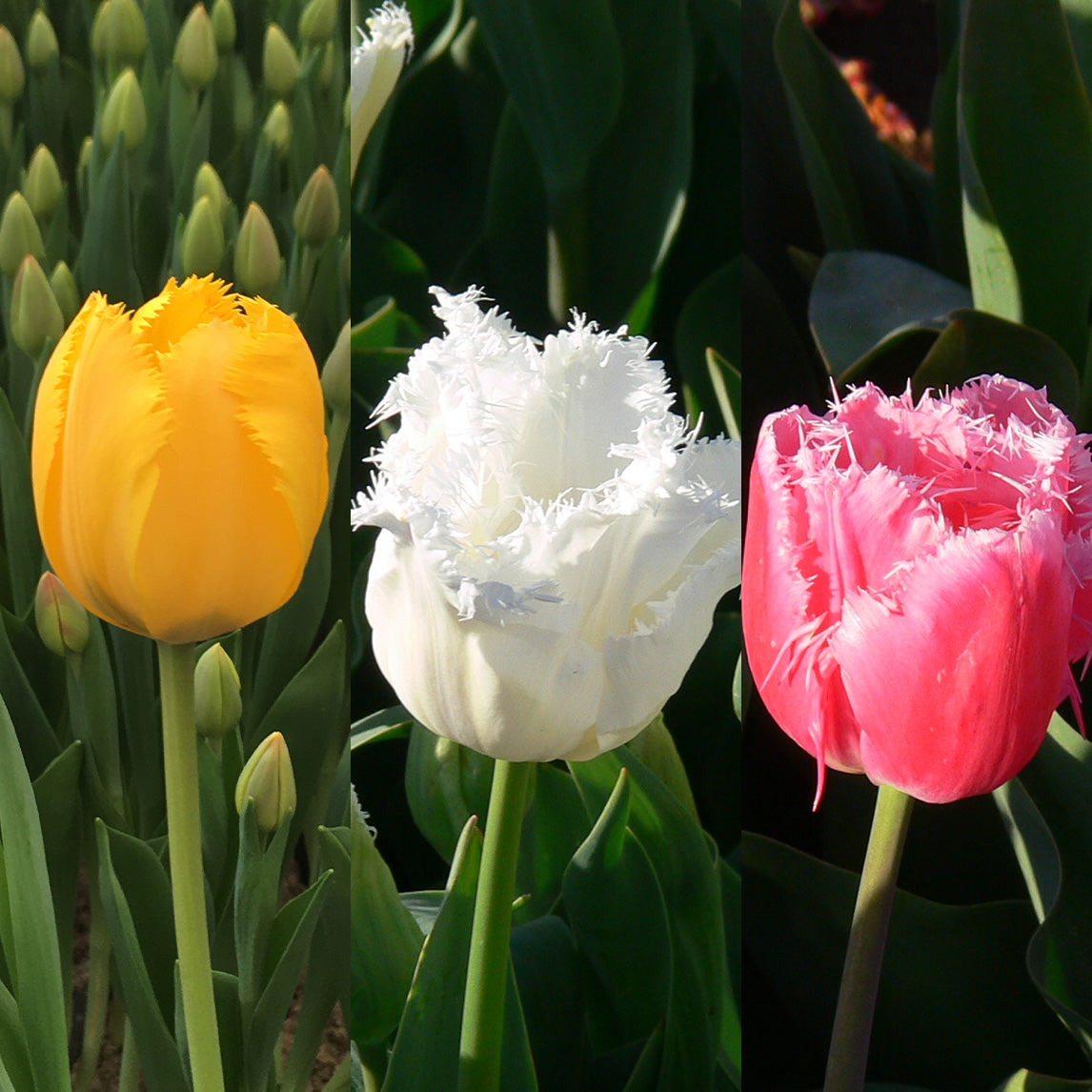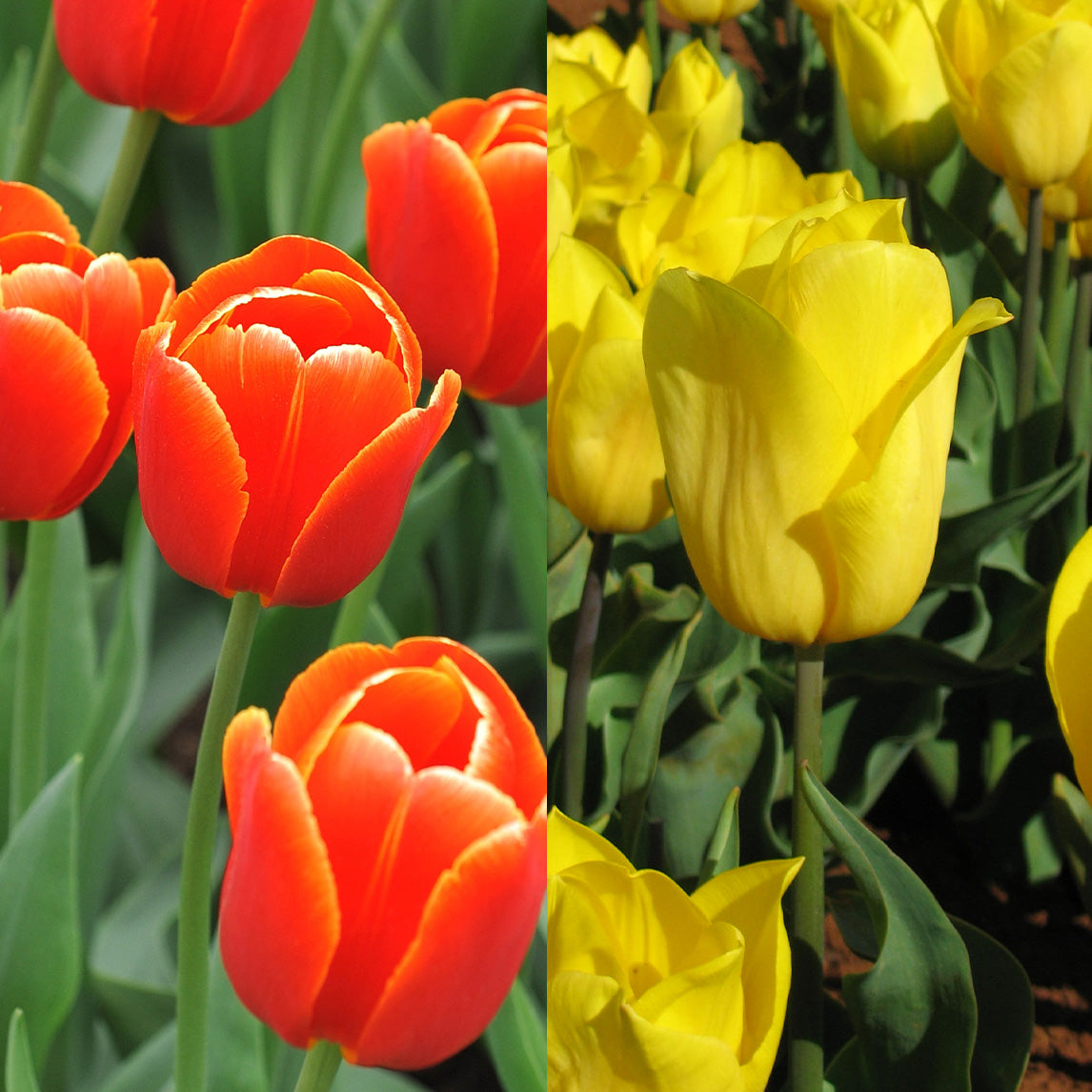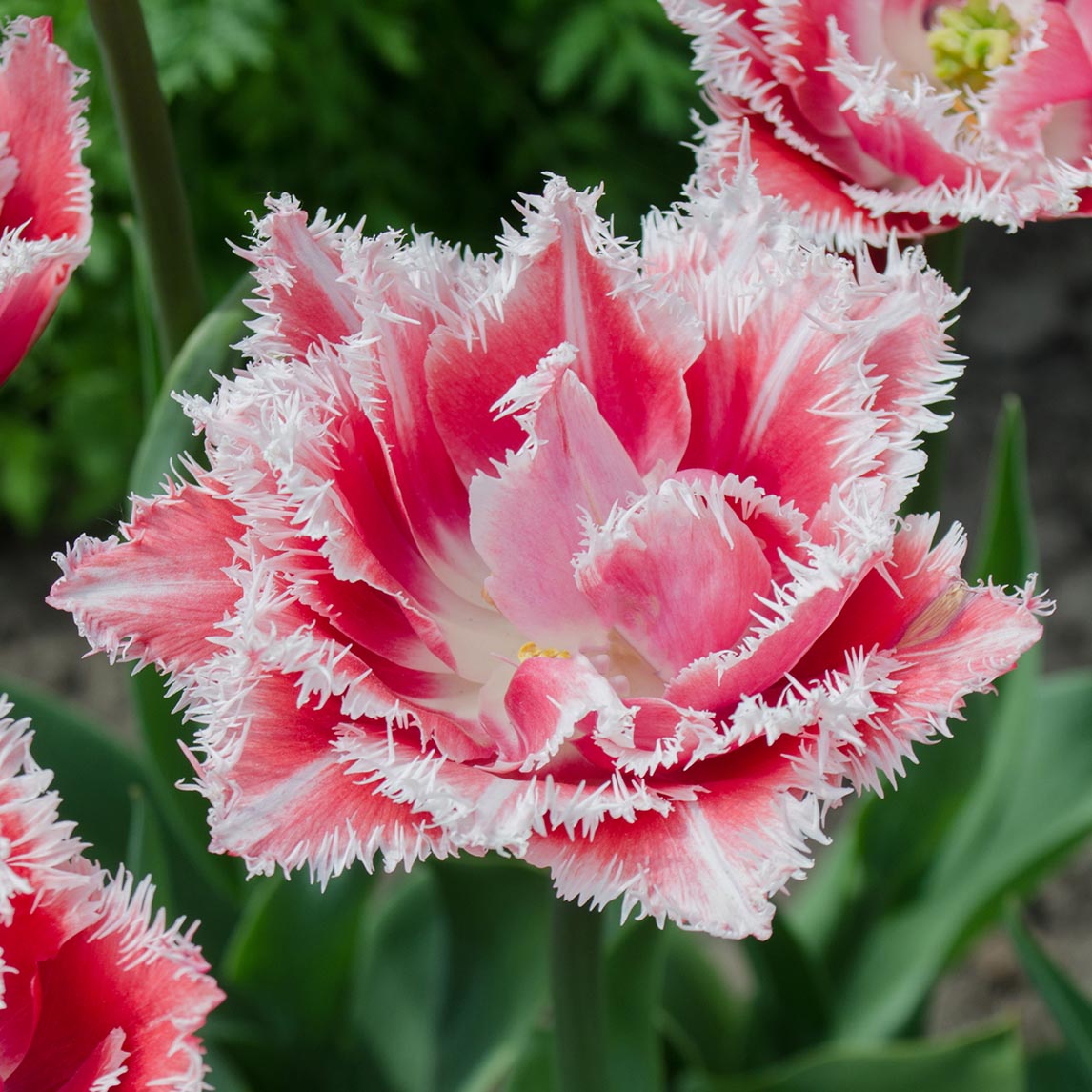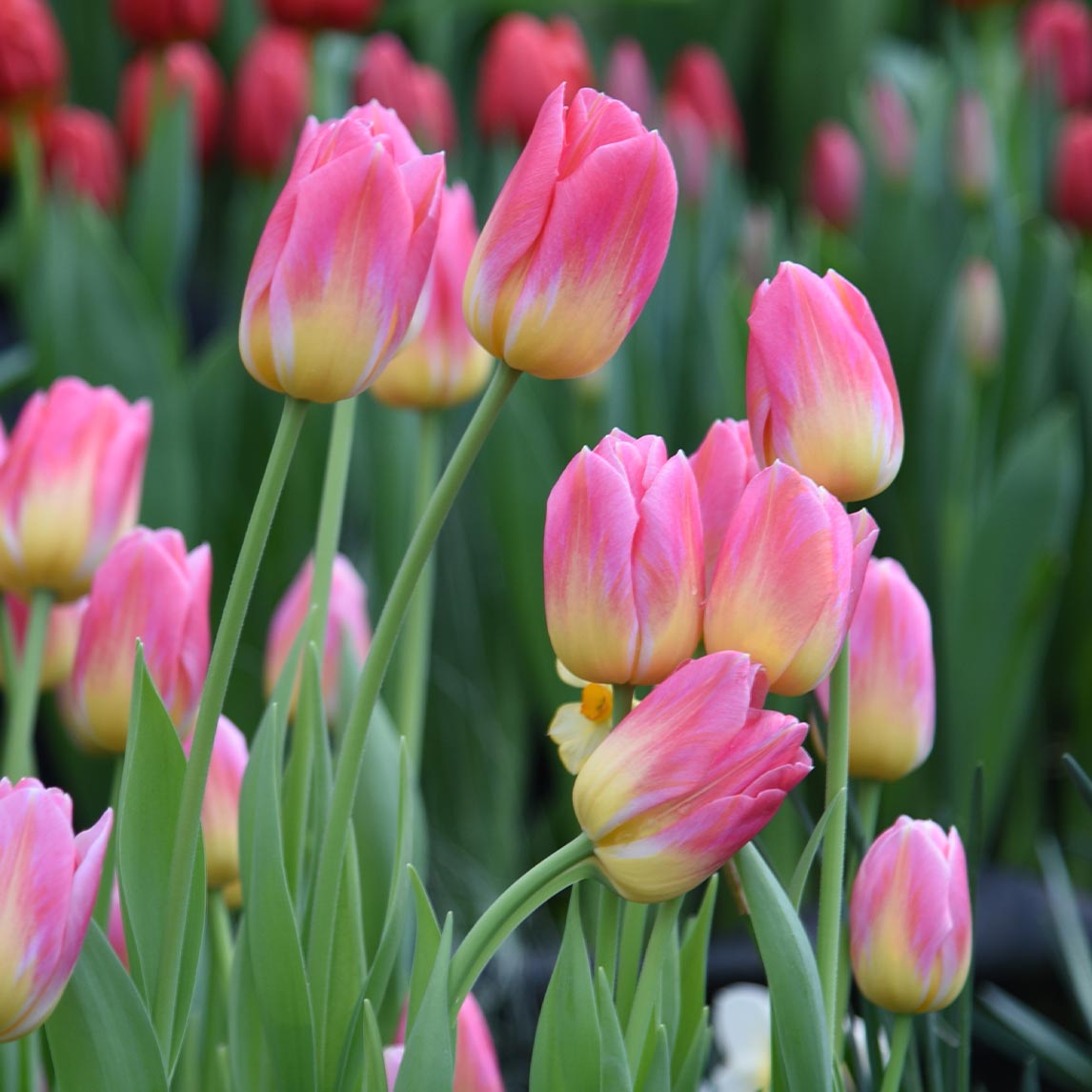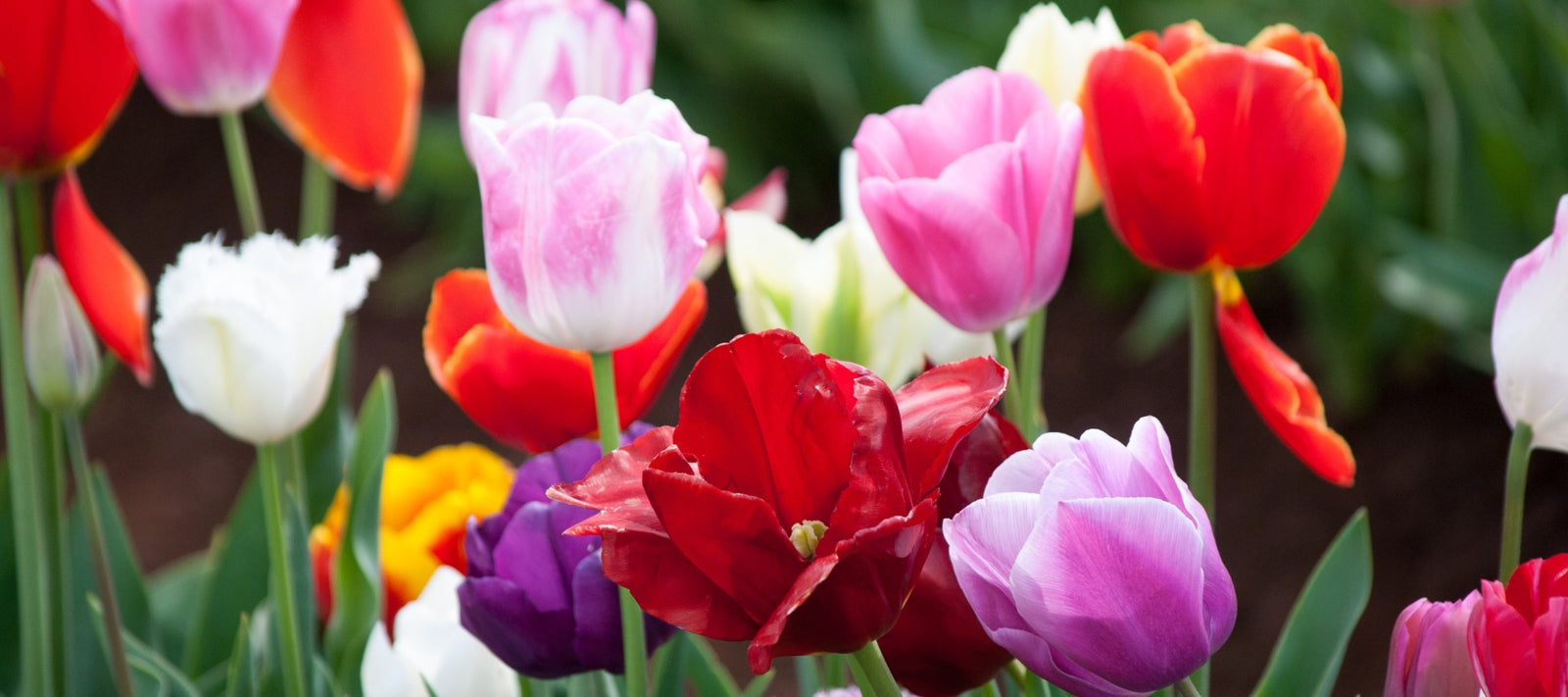
Tulips, with their vibrant colours and elegant blooms, are a favourite among gardeners around the world. While traditionally associated with cool climates, tulips can grow successfully in other regions of Australia - all you need is a few simple tips and tricks to help get them growing.
Bringing colour and excitement to the garden in spring, here are our seven top tips to growing tulips successfully in Australia.
1. Choose the right variety
When selecting tulip bulbs, it is important to choose a variety that is best suited to the Australian climate. While tulips thrive in cool regions, there are some varieties that are better adapted to warmer climates. Darwin hybrids are known for their robustness and ability to withstand warmer temperatures, which is why they are popular in Australian gardens. Tulips that bloom in late winter or early spring are also well suited to our climate and soil temperatures.
2. Planting
Timing is crucial on when to plant tulip bulbs in Australia. Aim to plant your tulips in late autumn to early winter, ideally around May to July, depending on your location and climate. Planting at the right time allows tulip bulbs to establish their roots and set their top growth before the onset of warmer weather. This helps to ensure better growth and flowering in spring.
Tulip bulbs can be placed in the crisper section of your fridge to help 'force' them into flowering. This simulates a cold winter and will initiate the flowering response. Store in a brown paper bag for 8-12 weeks prior to planting. Avoid placing in a fridge containing fruit and vegetables as the ethylene gas expelled by ripening fruit can cause the flower bud inside the bulb to abort.
When the time is right, tulip bulbs should be planted in a well-drained soil that is enriched with organic matter. Plant the bulbs in late autumn, about 6-8 weeks before the last frost.
Make sure to plant bulbs with the pointed end facing upwards, and about 10-15cm deep. The bulbs should be spaced about 10-15cm apart to allow for proper growth and development. Mark bulbs at planting to avoid accidental damage.
3. Position
Tulips love full sun. Select a sunny position in your garden that receives at least 6-8 hours of direct sunlight daily. Adequate sunlight promotes strong, healthy growth and vibrant blooms.
In regions with hot summers, consider planting tulips in an area with morning sun and afternoon shade. This will help to prevent excessive heat stress.
4. Soil and Water
Tulips require consistent moisture and good drainage. Avoid overwatering as this may cause the bulbs to rot. Avoid watering during dormancy.
Water tulips deeply once a week, or more frequently if the weather is particularly dry, especially during their active growth phases. Keep the soil evenly moist but not waterlogged.
Water deeply, allowing the moisture to penetrate the soil to the depth of the tulip bulbs. During periods of extended dryness, increase watering frequency to prevent the soil from drying out completely. In areas with poor drainage, consider improving the soil, plant in a raised garden bed or grow tulips in pots.
5. Fertilising
Tulips benefit from regular applications of complete fertiliser, particularly during their growing phase. Apply before planting, and then again in early spring when the leaves begin to emerge. Tulips benefit from regular fertilisation to support healthy growth and abundant flowering.
Before planting incorporate a balanced, slow-release fertiliser into the soil to provide essential nutrients once germination begins. Once the tulips begin actively growing, apply a water-soluble fertiliser high in phosphorus every 2-3 weeks to promote flowering.
6. Protecting from pests
Tulips can be susceptible to pests such as aphids and slugs. To protect your bulbs, consider using natural remedies such as diatomaceous earth or neem oil. Snail traps also help to discourage these voracious pests. Growing in pots also helps to minimise pests as potted plants can be readily moved inside away from these nocturnal predators.
7. Maintenance
Deadhead spent blooms regularly to prevent seed production and conserve the plant's energy for bulb development.
Once the tulips have finished flowering, it is important to allow the leaves to die back naturally. This allows the bulbs to reclaim and store the necessary nutrients for the next growing season. Avoid cutting back the foliage until it has completely yellowed.
Consider lifting and dividing overcrowded bulbs every few years to maintain vigour and prevent overcrowding. You can also do this to enable cold storage again next autumn. Store them in a cool dry location until it's time to place in the crisper or out into the garden.

Additional tips for planting tulips in pots
In addition to the steps above, when planting tulips in pots look for a pot at least 20cm deep with excellent drainage. When planting in pots, always use potting mix. Select a potting mix that meets Australian standards and is designed for bulbs or flowering plants.
Plant bulbs as deep as you would in the garden (2-3 times their width) but space them much closer together. This will make for a spectacular potted display. Leave just 2-3cm between bulbs, depending on the width of your pot, and plant in a circular pattern.
Place your pot in full sun for at least 6 hours per day, but be sure to bring inside to enjoy whilst flowering.
With patience, attention to detail, and a little bit of know-how, you can create a colourful tapestry of tulips that will be the highlight of your garden in spring.



